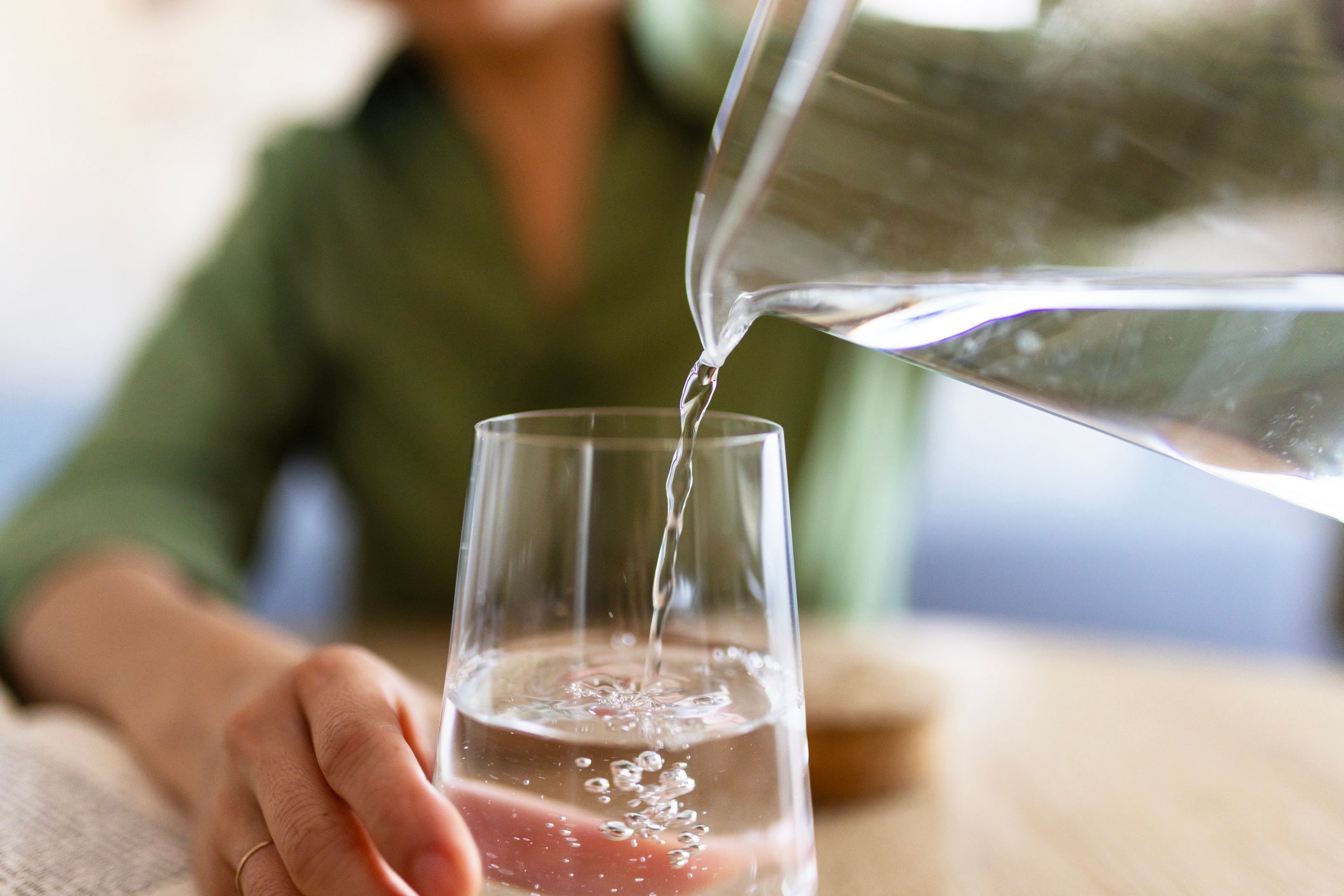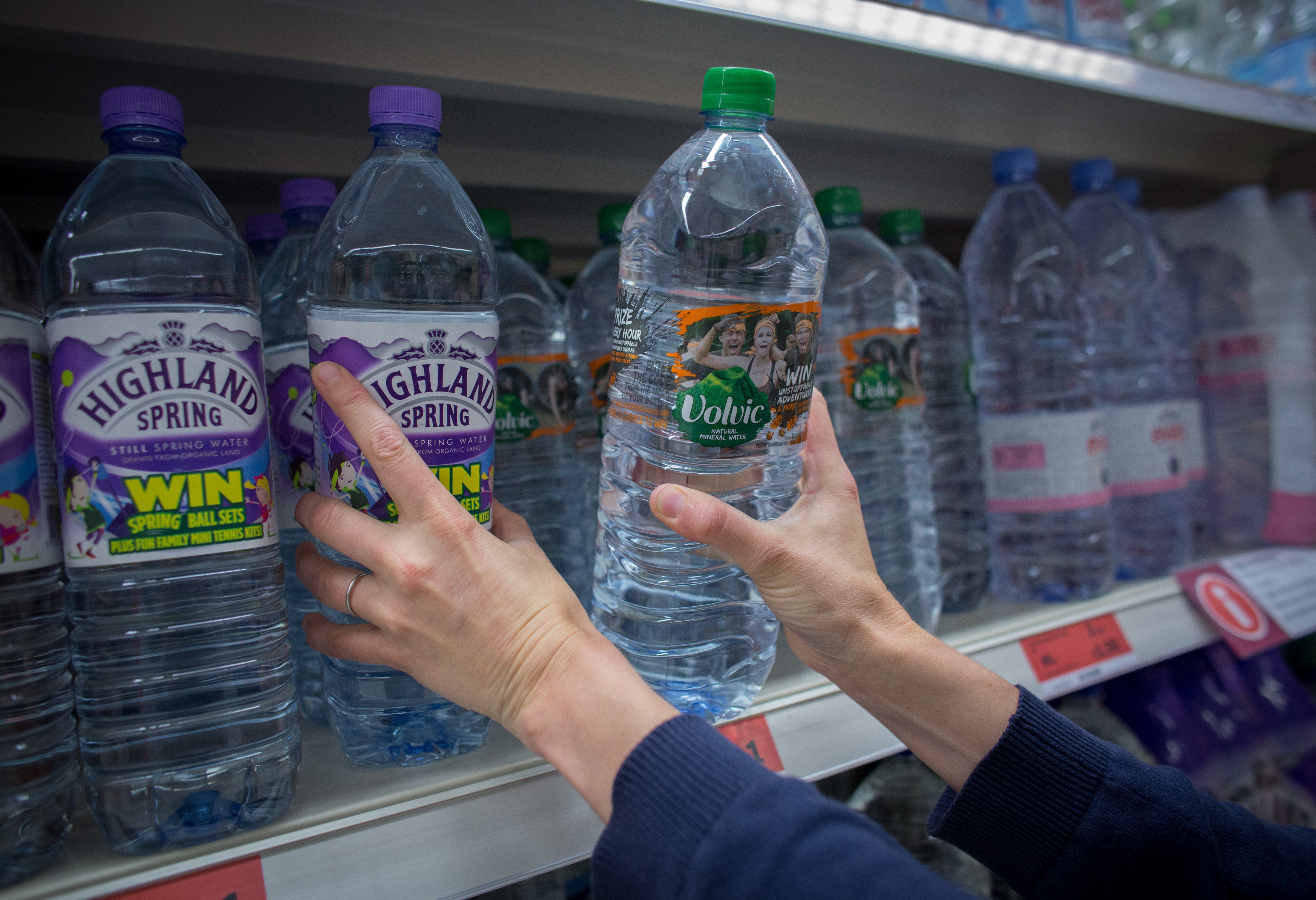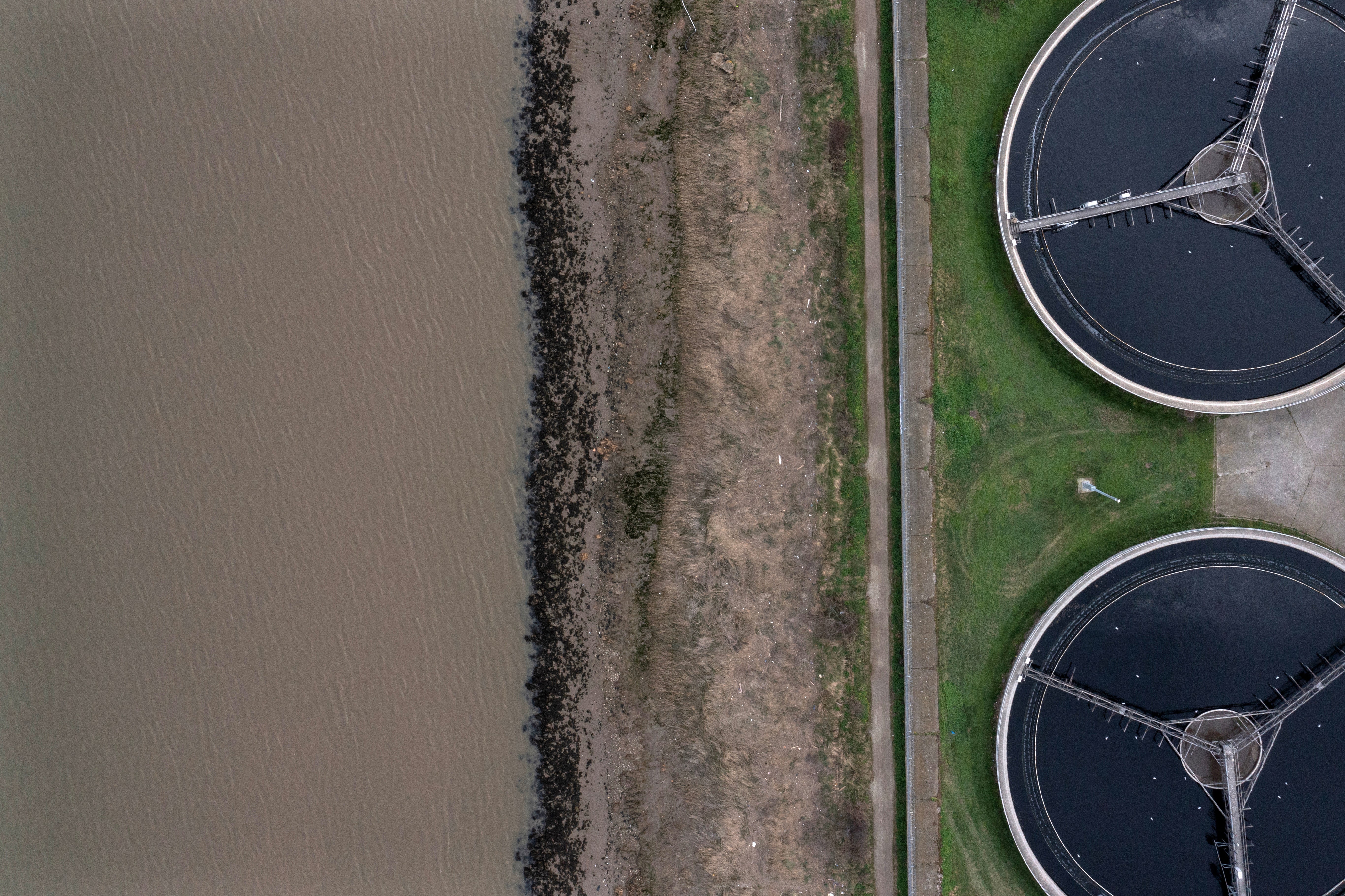Is drinking tap water bad for you? Wellness influencers say yes, but here’s what the experts think
From microplastics to minerals, what’s really in UK tap water and should we all be filtering it? Emilie Lavinia looks at what science says about the things we should (and shouldn’t) worry about

Concerns about the safety and purity of UK tap water are no longer confined to the comment sections of influencers with conspiratorial or fringe ideas. An increasing number of British consumers are now filtering their water, worried that it might be unsafe to drink.
Investigations by The Guardian, Watershed Investigations, and the Drinking Water Inspectorate (DWI) have revealed the presence of potentially harmful substances – specifically PFAS (per- and polyfluoroalkyl substances, also known as “forever chemicals”) – in drinking water sources used by 17 out of 18 English water companies. The findings have raised significant questions about long-term exposure to such contaminants and prompted renewed scrutiny of the UK’s water infrastructure.
From countertop filtration systems and under-sink reverse osmosis units to purifying showerheads and portable bottles, there are now several ways to filter your tap water at home. Some of these solutions are expensive – costing more than £2000 – but they claim to transform potentially harmful water into safe, drinkable, even health-boosting H2O.
But is the concern around our tap water justified, and do these domestic filtration products offer any meaningful protection?
I grew up in an old house, with my mum telling me never to drink from the hot tap in case there was a dead pigeon in the tank in the loft, or in case the hot water dislodged some slime in the Victorian pipes. We had a filter installed, and I assumed all people had these concerns around tap water – I was met with blank stares when I warned the room about the pigeon risk at a sleepover when I was 14.
I love to drink water, but I’ve always been sensitive to its flavour – the mineral content, the provenance; as a health writer, these things interest me. For years, I used a Brita filter, but after reading a study about microplastics found in UK tap water – despite claims that treatment facilities are able to remove more than 99 per cent – I switched to some heavier-duty technology: the Skuma countertop water filter. The Skuma uses three-stage reverse osmosis to remove microplastics, chemicals, and heavy metals, and then infuses the water with the helpful, health-giving minerals it stripped out.
I’m not so obsessive that I would start arguing with my dentist if handed a cup of tap water to rinse with, like I have seen some American wellness influencers do on Instagram. I wouldn’t turn down a drink if it had been made with tap water, but I am more mindful about what I’m drinking when I can help it.
Though the UK maintains some of the highest regulatory standards for drinking water globally, a growing body of research points to the presence of emerging contaminants – including microplastics, industrial chemicals, heavy metals, and pharmaceutical residues – in our water supply. Many of these substances are still not yet regulated under UK or EU law, despite growing evidence of potential links to hormonal disruption, developmental issues, liver toxicity, and certain cancers.

“I was really focused on microplastics, PFAS, and other substances that weren’t being widely reported on,” says Charles Robinson, founder of water filtration company Water2. “I remember asking scientists at UCL whether, if they were in charge, they would allow this – and the answer was a clear ‘no’.”
Robinson funded independent research through labs in Italy and the UK to develop a filtration system capable of removing contaminants at the sub-micron level. His first-generation filter launched in 2023 and was subsequently backed by survivalist and TV personality Bear Grylls.
“A standard filter jug may filter particles down to around 200 microns,” Robinson explains. “A human hair is about 70 microns for comparison. Our filters work down to 0.1 microns, capturing most microplastics, which typically range from 1 to 10 microns.”
A team of research scientists behind The Water Professor – an organisation offering laboratory water testing kits for home use – explain: “Smaller particle size may be important for the blood-brain defences against microplastics. In the study on the cognitive decline of mice contaminated with microplastics, the particle sizes were between 0.1 and 2 microns.
“The current understanding of toxicity associated with microplastics suggests that size does matter; smaller microplastics will find it easier to pass through tissue layers and could be absorbed through the stomach and lungs, entering deep into the body.”

They also point to early studies suggesting that particles below 25 microns can pass through biological barriers and accumulate in organs, causing adverse effects. Larger particle sizes are less likely to have toxic effects since they are unable to pass through biological membranes.
Logic then follows that high-tech filters able to sift out smaller microplastics will be better for you than something like a filter jug. The Water Professor’s research also suggests that bottled water, on average, contains a higher concentration of smaller microplastics and could be worse for humans than previously thought, which is why opting for glass or metal bottles might also be the healthier choice.
However, filtration is not without trade-offs. It might sound like a perfect solution, but some high-powered systems, such as reverse osmosis units, can also strip water of essential minerals like magnesium and calcium. These nutrients are linked to bone health, cardiovascular function, and even skin health, so their presence in water is important.
“It would be easy to assume that pure H2O is the gold standard,” says Robinson. “But distilled or over-filtered water can actually be less beneficial if it lacks mineral content. The challenge is reducing harmful contaminants while preserving key elements.”
Many people choose to add electrolytes to filtered water to ensure at least one glass contains a recommended daily allowance of vitamins and minerals. It’s a smart workaround – and one that I personally employ every morning. However, there are concerns around these kinds of products too. Nutritionists frequently warn of the dangers of taking too many supplements and overloading the body, so be mindful of whether you actually need electrolytes and how much of a product you’re using.
Public health authorities continue to assert that UK mains water is safe to drink. But as Robinson and The Water Professor point out, “safe” does not necessarily mean optimal, particularly given the pace at which chemical pollutants, synthetic compounds, and microplastics are entering the global water cycle.
The Water Professor researchers explain that the most common plastic materials contributing to micro- and nanoplastics in water are polyvinyl chloride (PVC), polyethylene terephthalate (PET), polystyrene (PS) and polyethylene (PE), along with toxic chemicals such as per-and poly fluoroalkyl substances (PFAS ) and BPA. PFAS are commonly associated with non-stick cookware, as well as cosmetics, food packaging and outdoor clothing.
These chemicals are also known as “forever chemicals” because they don't break down easily and can build up in the environment, leading to potential risks for both wildlife and humans.

Last year, researchers at Birmingham University found that the combined effects of PFAS with microplastics led to greater harm. After studying their effects on water fleas, they noted delays in sexual maturity and stunted growth. Their study paves the way for future research on how these chemicals might affect gene function, providing crucial insights into long-term biological impacts not only on aquatic species but on humans too.
Menstrual health brand Asan recently reported that 2.4 million tampons are flushed down UK toilets each day, some of which end up in wastewater systems. Trace fibres and fragments from hygiene products, pharmaceuticals, and plastics are increasingly being detected in tap water, and while the long-term health impacts of these exposures are still under investigation, their ubiquity is raising alarm among environmental scientists and public health researchers.
Stephanie Metzger, policy advisor at the Royal Society of Chemistry, has said: “Here in the UK, we monitor for a long list of PFAS, but we’re lagging far behind the US and the EU when it comes to the amount allowed in our drinking water and what is considered healthy.
“We know that PFAS can be filtered from drinking water – the technology exists – so increasing the level of filtration is just a matter of expense and political will.
“In [the regulator] Drinking Water Inspectorate’s own words, levels above 10 nanograms per litre pose a medium or high risk to public health. We’re seeing more and more studies that link PFAS to a range of very serious medical conditions, and so we urgently need a new approach for the sake of public health.”
A 2024 study of London boroughs showed that in Harrow, a water sample had a PFOS (a type of PFAS) level of 14 nanograms per litre (ng/l) – 1.4 times the maximum limit for its presence in tap water under proposals put forward by the RSC.
The answer as to whether you should be filtering your water largely depends on the level of risk you are willing to accept. For many, the regulated standard of UK tap water is sufficient. But for those concerned about cumulative exposure to emerging contaminants – or managing specific health conditions – additional filtration may be worth considering.
“It’s about making informed choices,” says Robinson. “Not everyone can afford an expensive system, but a well-made filter that costs under £100 a year can reduce your exposure significantly.”
That said, experts caution against assuming that all filters are created equal. Filtering technologies vary significantly in their efficacy. While standard pitcher filters can improve taste and remove some chlorine, only high-performance filters operating below one micron are likely to capture smaller contaminants such as microplastics and certain PFAS. Consumers should look for independently verified performance data, consider the filter’s lifespan and replacement costs, and weigh potential losses in mineral content against reductions in harmful substances.

Of course, some people resort to filtration to soften hard water, which contains elevated levels of calcium and magnesium. These minerals not only cause the build-up of limescale on appliances and surfaces, but may also affect skin and hair.
According to Karlee Oz, founder of Hello Klean, showering in unfiltered water may “leave residue, contribute to dryness, and exacerbate conditions like eczema,” she explains. “In addition, hot showers can vaporise chlorine and other disinfectant byproducts, increasing the risk of respiratory exposure and irritation.”
Hello Klean’s shower filters use KDF (Kinetic Degradation Fluxion) technology to convert chlorine into gentler compounds. Oz emphasises the importance of using filters that are clinically tested and certified for efficacy. “Filtering reduces the burden on the skin and hair barrier and may improve tolerance over time.”
Of course, not all areas in the UK have a hard water problem – and in some cases, softer water may be better for skin and hair – but a filter can still remove heavy metals like lead and cadmium and traces of harmful bacteria like E. coli.
For the consumer, it can be complicated. UK tap water meets legal safety standards: it undergoes multiple filtration rounds and was ranked joint first for drinking water quality and sanitation in Yale University's 2022 Environmental Performance Index, along with Finland, Iceland, Norway, Switzerland, and the Netherlands.
However, that doesn’t mean there is no room for improvement. Research suggests that trace levels of PFAS, microplastics, and other contaminants are present in some supplies. Filtration can reduce exposure to these substances, but must be balanced against the potential loss of essential minerals.
Research is still ongoing, but personally, I’ll always reach for filtered water, glass bottles, and avoid ice if I can. A filter in my shower has made a noticeable difference too. It’s a personal choice – but with microplastics now found in human blood, remote Antarctica, tea bags, and at the bottom of the ocean, I’ll do what I can to avoid them in my morning glass of H2O.



Join our commenting forum
Join thought-provoking conversations, follow other Independent readers and see their replies
Comments